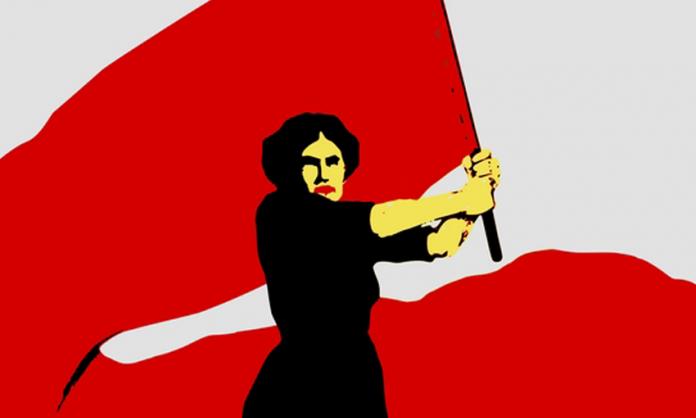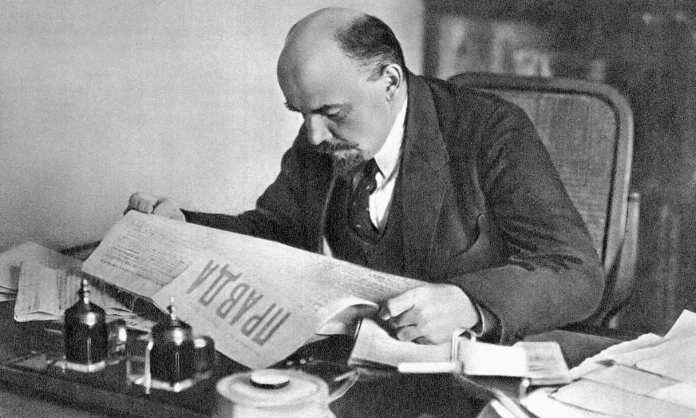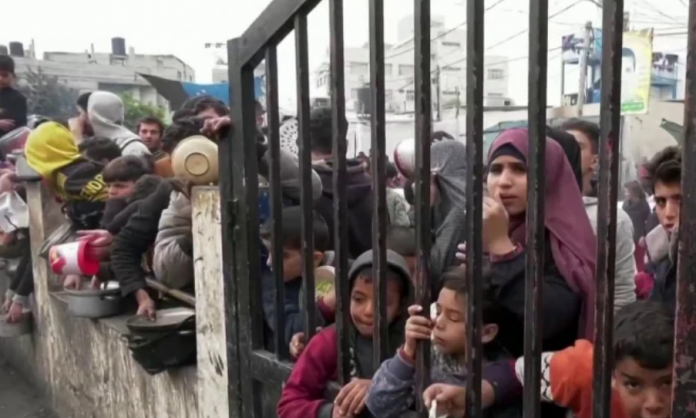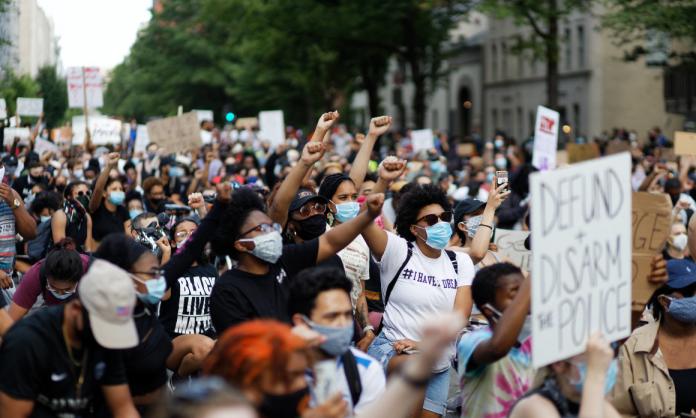From secret police records in Russia just before the First World War: “The most energetic and audacious element, ready for tireless struggle, for resistance and continual organisation, is that element ... concentrated around [Vladimir] Lenin”.
Lenin would be very proud of this because he devoted his life to trying to build the kind of party workers need to overthrow capitalism. An outline of how he developed his ideas about it illuminates many concepts of Marxist theory.
There is no timeless “Leninist party”, no blueprint spelled out in What Is To Be Done?, written in 1901, as many argue. Lenin’s ideas developed with experience. When circumstances changed, so did his strategy, tactics and the way the party was organised.
From his experience in mass strikes in the 1890s, Lenin realised, as Karl Marx and Friedrich Engels had before him, that workers could free themselves from capitalist exploitation and oppression—that they are capable of, in Marxist terminology, “self-emancipation”. But he also realised that this wouldn’t happen automatically.
He concluded that Marxists needed to intervene in the workers’ movement to defeat the influence of capitalist ideas, to take the fight against the bosses and their state to the highest level possible and to develop workers’ “class consciousness”—their ability to grasp their own collective power and understand that they had the potential to create a totally different society run for human need.
In What is to be Done?, Lenin said that Marxists needed to build a more serious organisation than had previously existed. He argued for a democratic, disciplined organisation united around clear, consistent politics so that its members could debate what to do and then carry out in practice their collective decisions.
Many of Lenin’s critics wrongly argue that he wanted to build a party of intellectuals. Actually, he aimed to build a mass workers’ party.
By the revolution of 1905—sometimes called the “first Russian revolution” to distinguish it from the socialist revolution of 1917—a small layer of worker intellectuals had been trained and educated in small Marxist discussion circles like the one Lenin joined in 1893. They could now lead wider layers of newly emerging worker activists.
The revolution reconfirmed Lenin’s conclusions from the 1890s: that class consciousness does not mean just being a militant willing to fight the boss. It means workers recognising their potential historical role in society as distinct from other social classes such as the capitalist class and the middle classes—the peasantry, intelligentsia, small business owners and so on.
How could they develop that understanding? Lenin answered: “Only struggle educates the exploited class. Only struggle discloses to it the magnitude of its own power, widens its horizon, enhances its abilities, clarifies its mind, forges the will”.
By “struggle”, he meant the process of workers standing together collectively—as a team, not as individuals—to campaign and fight for better wages, shorter working hours, democratic rights (Russia was ruled by a king at the time), against discrimination in the workplace and society and so on.
Democratic reforms won by the revolutionary struggle in 1905 created the possibility of legal political organisations. So Lenin argued to open the tight structures of the party’s groups, which had been operating secretively (often referred to as “working underground”) to avoid members being exiled, jailed or killed. He urged members to establish elected leadership committees and involve wider layers of radicalising workers.
But then, after the exhilaration of the revolution, came defeat and counter-revolution in 1907, creating new challenges. Lenin later outlined the situation:
“It is precisely because Marxism is not a lifeless dogma, not a completed, ready-made, immutable doctrine, but a living guide to action, that it was bound to reflect the astonishingly abrupt change in the conditions of social life. That change was reflected in profound disintegration and disunity ... [and] a very serious internal crisis of Marxism.”
The intellectuals became embroiled in debates about “the most abstract and general philosophical fundamentals of Marxism”, with a “prevalence of empty phrase-mongering”. This led to a serious debate among Bolsheviks and rare expulsions under Lenin’s leadership. (“Bolshevik” means “of the majority”. It was the name taken by Lenin’s party following a split in the Russian socialist movement in 1903. The other, moderate, faction was called the Mensheviks, “of the minority”.)
But Lenin viewed the political retreat and demoralisation of masses of workers differently from the intellectuals’ disarray. He concluded that the “millions who sprang into action could not continue at the heights they attained in the revolution”. They needed a rest in which to digest “lessons of unparalleled richness [which will] make it possible for incomparably wider masses again to march forward, but now more firmly, more consciously, more confidently and more steadfastly”.
Tom Freeman, an Australian Marxist, researched those 1890s and early 1900s study circles and Lenin’s theoretical development. He found that the worker activists who joined the Bolsheviks during the revolution were their stable base until the next upsurge in struggle in 1912.
In an analysis of the strikes of 1905-06, we get a feel for Lenin’s developing ideas. He is struck by the dramatic difference between the large number of days on strike by the most politically advanced and well-organised metalworkers and the relatively few days spent on strike by the least organised.
He noted that the metalworkers’ slogans were generally more political and audacious; their endurance and tenacity meant they could inspire and lead broader masses of workers. This advanced layer of workers—traditionally called the “vanguard”—has an important role to play:
“The political consciousness of the advanced contingent is ... manifested in its ability to organise. By organising it achieves unity of will and this united will of an advanced thousand, hundred thousand, million becomes the will of the class.”
And, importantly, “the less wavering there is within the party, the more varied, richer and more fruitful will be the influence of the party on the masses surrounding it.”
Lenin expanded on this: “My argument is that in all countries, everywhere and always, there exists, in addition to the party, a ‘broad section’ of people close to the party”.
He refers to the German Social Democratic Party (socialists and Marxists usually called themselves “social democrats” in the nineteenth and early twentieth century). The party’s 1 million members were nearly seven percent of the working class—around one out of every fifteen workers was a member. The 4,250,000 people who voted for the Social Democrats constituted broad sympathetic layers, which surrounded the party and could be expected to mobilise behind its leaders and members when struggles broke out.
“The party”, he concluded, “is the politically conscious, advanced section of the class, it is its vanguard. The strength of that vanguard is ten times, a hundred times, more than a hundred times, greater than its numbers”.
Every theoretical innovation by Lenin was a political intervention into a specific situation. He drew theoretical and political conclusions from workers’ struggles. In revolutions, he noted, the mass of workers “enter the political arena as active combatants ... learning in practice ... feeling their way, defining their objectives, testing themselves and the theories of all their ideologists”.
1905 was a striking example of this process. Workers created the first ever soviets, or workers’ councils, consisting of elected and recallable delegates from workplaces. Marxists had to work out how to relate to these bodies and draw conclusions for the future.
Lenin developed a political analysis of them. They created a forum in which the masses and all their organisations could participate in debates and decisions about the struggle. They provided a forum in which revolutionaries could argue their case to workers influenced by the moderate socialists and others. He emphasised the important role they could play in drawing the vast mass of the population behind the working class.
By intervening where they could—in trade unions, parliamentary elections, political campaigns—the Bolsheviks, by 1912, had established a party with the largest number of worker members in Russia. They also maintained an underground organisation because the democratic rights won in 1905 were limited.
Lenin proudly wrote about the party being strengthened by the significantly increased number of those he called the “Bolshevik mass workers” compared to the intellectuals. He was heartened by the fact that “work on the local level has passed to a remarkable degree into new hands, into the hands of a new generation of party workers”.
After almost all the European socialist parties supported their own ruling classes when war broke out in 1914, Lenin’s analysis of the world system of imperialism deepened. He concluded that the Russian revolution would be part of worldwide socialist revolutions.
His return to studying Marx and Engels during the war was critical for his pamphlet State and Revolution. He reinstated Marx’s argument that workers would have to smash the capitalist state, not try to use it to bring about socialism—as had increasingly become orthodoxy among socialists.
But he concluded that it’s not enough just to aim to smash the state, as anarchists argue. To expropriate and redistribute society’s wealth, and to crush the inevitable ruling class counter-revolution, the soviets had to form a new state, which would be truly democratic.
In one of the first of his letters from exile to the Bolshevik leaders after the February revolution in 1917 overthrew the Russian monarchy, Lenin described the soviets as “the embryo of a workers’ government, the representative of the interests of the entire mass of the poor ... i.e., of nine-tenths of the population, which is striving for peace, bread and freedom”.
He horrified the moderates and stunned even many of the Bolshevik leaders when, in his first speech after returning from exile, he raised the slogan: “All power to the soviets!” He had to convince the party members of what needed to be done, based on a solid analysis of the situation.
He argued that the self-proclaimed provisional government, which had been set up by the capitalists, and the moderate socialists who dominated the soviets, would not implement the demands (such as land distribution and an end to the First World War) for which workers, soldiers and peasants had risked so much. Workers would come to see the need for the soviets to take power through a combination of that experience and the Bolsheviks’ arguments. He argued:
“We are not charlatans. We must base ourselves only upon the consciousness of the masses ... We must not be afraid to be a minority ... We will carry on the work of criticism in order to free the masses from deceit ... Our line will prove right.”
In response to repression by the provisional government after a premature attempt at an uprising by militant workers in July, Lenin addressed detailed, patient arguments to the Bolshevik militants on why they now needed to drop the slogan “All power to the soviets”:
“It is not a question of soviets in general [on which a new state needs to be built], but of combating the present counter-revolution and the treachery of the present soviets ... The substitution of the abstract for the concrete is one of the greatest and most dangerous sins in a revolution ...
“The slogan calling for the transfer of power to the soviets might be construed as a ‘simple’ appeal for the transfer of power to the present soviets ... [but this] would mean deceiving the people. Nothing is more dangerous than deceit.”
Soviets, like any other institution, do not exist separate from human consciousness and intervention. No organisational form thrown up in the struggle can automatically ensure victory over capitalism.
The Bolsheviks had to defeat the Mensheviks and the Socialist Revolutionaries (another moderate political force, despite its radical sounding name), who only wanted democracy in a capitalist state. They had to win majority support for their argument for a workers’ government before they raised “All power to the soviets” as a slogan again.
Then, by the end of September, when they were winning in soviet elections, Lenin argued mercilessly against the hesitancy of the party leadership. His study of nineteenth century German philosopher Georg Hegel during the war made him conscious that “moments” in history do not last indefinitely.
If the Bolsheviks did not act, workers’ preparedness to confront the state and their enthusiasm for soviet power would evaporate and the masses would conclude that the Bolsheviks were no better than all the other prevaricating socialists.
Lenin’s critics argue that he built a party that was undemocratic, dogmatic, reductionist, narrow and sectarian—the latter word generally meaning “to put one’s own organisation’s interests first, at the expense of the interests of the working class”.
But Lenin insisted on the right for all members to participate in debates. He was often in a minority, such as in April and September 1917, having to argue for his proposals to gain support. Then he insisted that decisions should be implemented with disciplined unity.
He vehemently argued for the party to fight every form of oppression—the first party publication about women’s oppression was initiated and encouraged by him. He insisted on the right to national independence for oppressed nations and minorities, and fought against religious persecution and political and cultural repression of artists and writers.
Were they sectarian? The fact is, only the Bolsheviks were capable of leading a united coalition of all those who wanted to defend the revolution against an attempted counter-revolutionary military coup in August 1917.
The Bolsheviks won a majority in the soviets for a second revolution in October because they learned to articulate the desires of the masses and won their confidence to take power.
So the role of the party is to intervene as the best fighters in struggles, backed up by revolutionary arguments. At every turning point, the party must be able to analyse the social, economic and political situation, assess the mood of masses of workers and broader layers, in order to orient correctly.
Leon Trotsky, who joined the Bolsheviks in August 1917 and led the seizure of power in October beside Lenin, said the Bolsheviks did not exaggerate success, did not bend the truth of events to satisfy their own arguments. “The school of Lenin was a school of revolutionary realism”, he later wrote.
The key to Lenin’s theory of the party, the link which unites theory and practice, tactics and principles, which illuminates the kind of party socialists need to build today, was his absolute confidence in the ability of the working class to overthrow capitalism and a single-minded commitment to that revolution.
It is these politics, not the particular ways they organised at any specific time, which is the distinctive contribution to revolutionary theory and practice by Lenin and the Bolsheviks.











